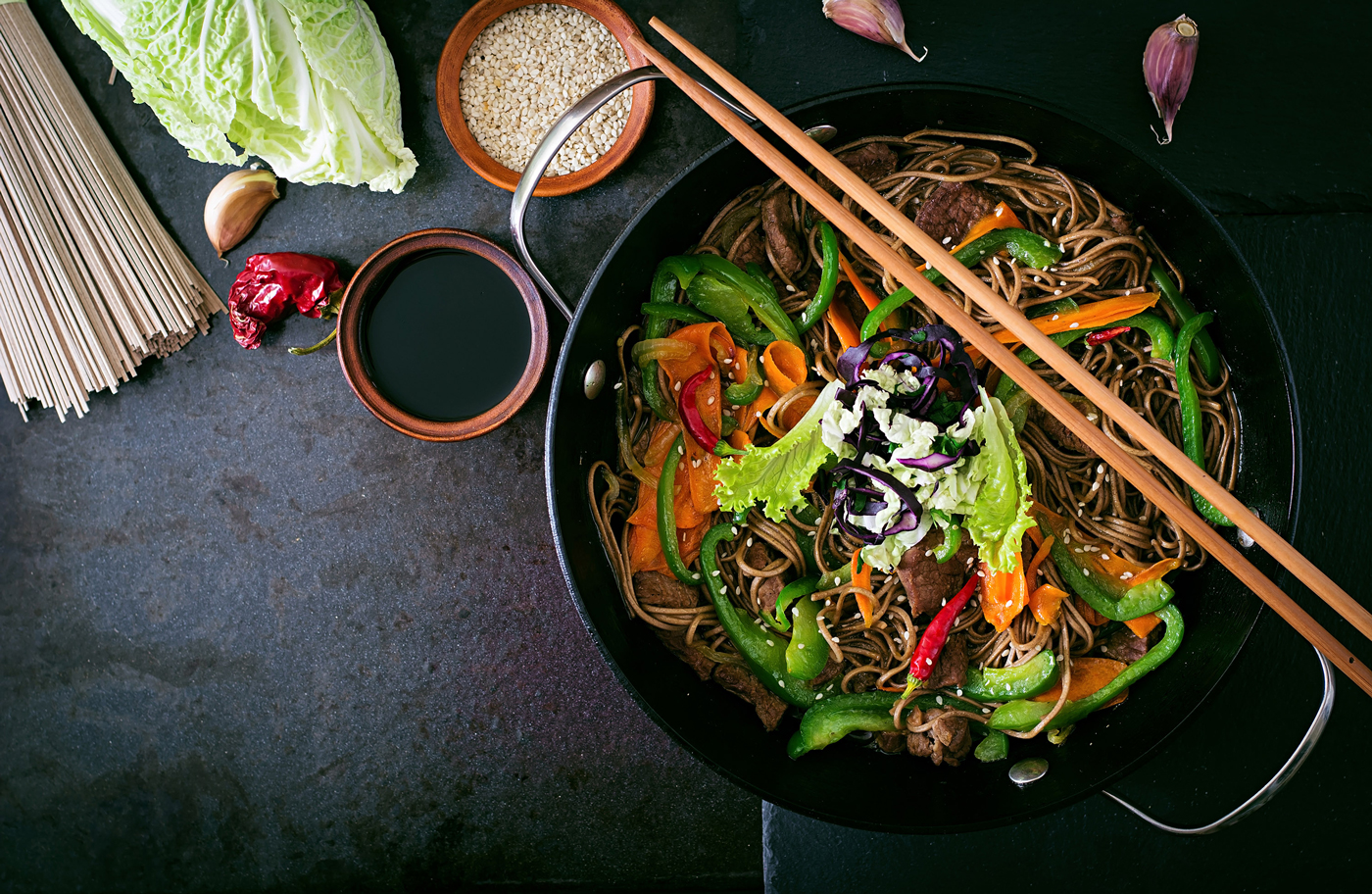

MASTER'S BOOK
MOST POPULAR JAPANESE NOODLES
Noodles in Japan
Japanese noodles are the basic components of many popular and world-famous dishes. They are not just the main soup ingredient, but also an excellent addition to vegetable and meat dishes served with aromatic sauces. Combined with bouillons, sauces or seasoned pieces of meat and vegetables, Japanese noodles provide a unique blend of tastes, often impossible to achieve in Western cuisine. They are part of traditional soups, such as ramen or miso. Japan noodles have also become the main ingredient of instant foods, now available all over the world as easy-to-make soups or ready-made meals that require no cooking experience.
Japanese SOBA noodles
SOBA noodles are one of the best known and most widely used Japanese noodles. They date back to the early 17th century (the Edo period), when the first establishments specialising in making and serving this type of light noodles were founded in Japan. SOBA noodles are made from buckwheat flour and come in two variants: served hot (KAKE SOBA) and served cold (ZARU SOBA). They are thin, flexible and delicate. Cooking takes up to 7 minutes and does not require salt. In Japan they are served both in high-end restaurants and roadside stalls. They go perfectly well with components such as seaweed (WAKAME SOBA), fried tofu cheese (KITSUNE SOBA), raw egg (TSUKIMI SOBA) or tonkatsu (TANUKI SOBA). The long, stretched noodle shape is viewed by the Japanese as a symbol of long life.
Japanese UDON noodles
Another distinctive Japanese type of noodles is UDON. Made from wheat flour, it is completely different from SOBA in terms of the production method, thickness and texture. UDON is eaten hot (KAKE UDON) and served in thin broth or kakejiru, with soy sauce or mirin. It comes with different flavours, aromas and add-ons depending on the region of Japan. Dark-coloured broth based on soy sauce (koikuchi shōyu) is served in the eastern regions, while the light-coloured version (usukuchi shōyu) can be found in the western part of the country. UDON noodles can be accompanied by a variety of different add-ons for a more attractive taste of dishes. Soups feature ingredients such as shrimps, cut tempiura (kakiage), tofu fried with sugar (abura age), soy sauce, chopped apple pie, thinly-cut fish pastry (kamaboko) or mirin.
Japanese noodles and diet
Both SOBA and UDON noodles are easy to digest and low in calories, with up to 400 kcal per 100 g. This makes them an excellent choice for dieting.























